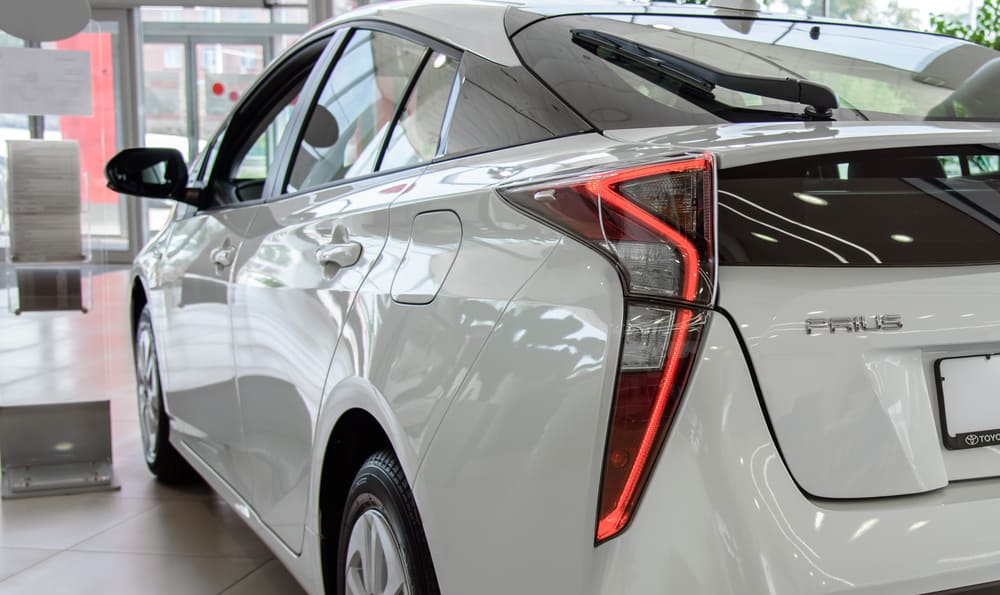The Toyota Camry has long enjoyed a reputation for being one of the most durable and reliable brands of cars on the road. Even so, they can be prone to mishaps if they are not properly maintained or repaired. A common complaint among Camry owners revolves around the cause of their check engine light illuminating. Our team of skilled Toyota mechanics can explain to you why your check engine light is on and what you need to do to address the issue promptly.
Faulty Spark Plugs or Spark Plug Wires In Your Toyota Camry
The spark plugs are responsible for igniting the mixture of fuel and air in your engine. They help provide power to the engine while the spark plug wires in turn transfer the spark to the plugs from the ignition coil.
When either the wires or plugs go bad, they can have a detrimental effect on your Camry’s performance rating. Their compromised condition can also damage other components in the engine.
When the check engine in your Camry comes on, you can bring it to us so that we can test your spark plugs and wires. If we detect that these parts are the issue, our Toyota mechanics will replace them right away.
A Toyota Camry With A Malfunctioning Mass Airflow Sensor
The mass airflow sensor functions to measure the volume of air that goes into the engine. It determines how much air is needed for the engine to operate efficiently.
As important as this part in the engine is, it is also one of the most common reasons for the check engine light to illuminate. When the part malfunctions, it negatively impacts the fuel economy of your Camry. However, it can be difficult for you to determine if the mass airflow sensor is acting up while you are driving your car.
If your check engine light is on, allow our team of experienced Toyota mechanics to test your mass airflow sensor. We can find out if it is the reason for why the light is on and replace it if necessary to resolve the issue quickly.
Your Toyota Camry Could Have A Bad CO2 Sensor
It would be fair to argue that most Camry owners do not know what a CO2 sensor is or what purpose it serves in their engines. It measures the amount of unburned oxygen that is in your car’s system.
When this sensor malfunctions, it throws off your car’s fuel economy. It also triggers the check engine light to come on.
If you do not find out why the check engine light is on and discover what the issue is with your CO2 sensor, it can have a detrimental impact on your spark plugs and catalytic converter. Rather than take that risk, you can bring your Camry to our shop and let us run tests on this sensor. We will repair or replace the sensor and make sure that the check engine light is no longer plaguing you and your Toyota.
Malfunctioning Catalytic Converter
A bad catalytic converter also can trigger the check engine light to come on while you are driving. This important part is responsible for converting the carbon monoxide in the engine to carbon dioxide. Without proper care and attention to it, it can become significantly damaged.
Further, you need to replace a bad catalytic converter in order to pass emission tests in your state. A faulty converter will cause your car to operate at higher temperatures.
Instead of ignoring your check engine light in your Camry, you can bring the car to us to run tests on and find out what is wrong with your engine. We can replace your catalytic converter if necessary and reset the check engine light.
Damaged, Loose, or Missing Gas Cap
Out of all of the reasons for your check engine light to come on in your Toyota Camry, which would be the most pleasant easily fixed? Perhaps the most common and seemingly most inconsequential is a damaged, loose or missing gas cap. The gas cap actually serves an important purpose. It seals the fuel system in your Camry and reduces the emissions while maintaining pressure.
A faulty or missing gas cap will increase harmful emissions from your car and negatively impact its fuel efficiency if the cap is not replaced. You can easily rule out a missing gas cap. If you bring your Camry to us and we find that you need to replace a faulty cap, we maintain a healthy inventory on hand.
There are a number of reasons that can trigger a check engine light in a Toyota Camry. It can be one of the most irritating problems to deal with as a car owner. Rather than ignore it or try to figure out the issue by yourself, bring your Camry to us at Cloverdale Auto in Winston Salem North Carolina. Our knowledgeable and skilled Toyota mechanics will quickly and efficiently get you and you car safely back on the road.









